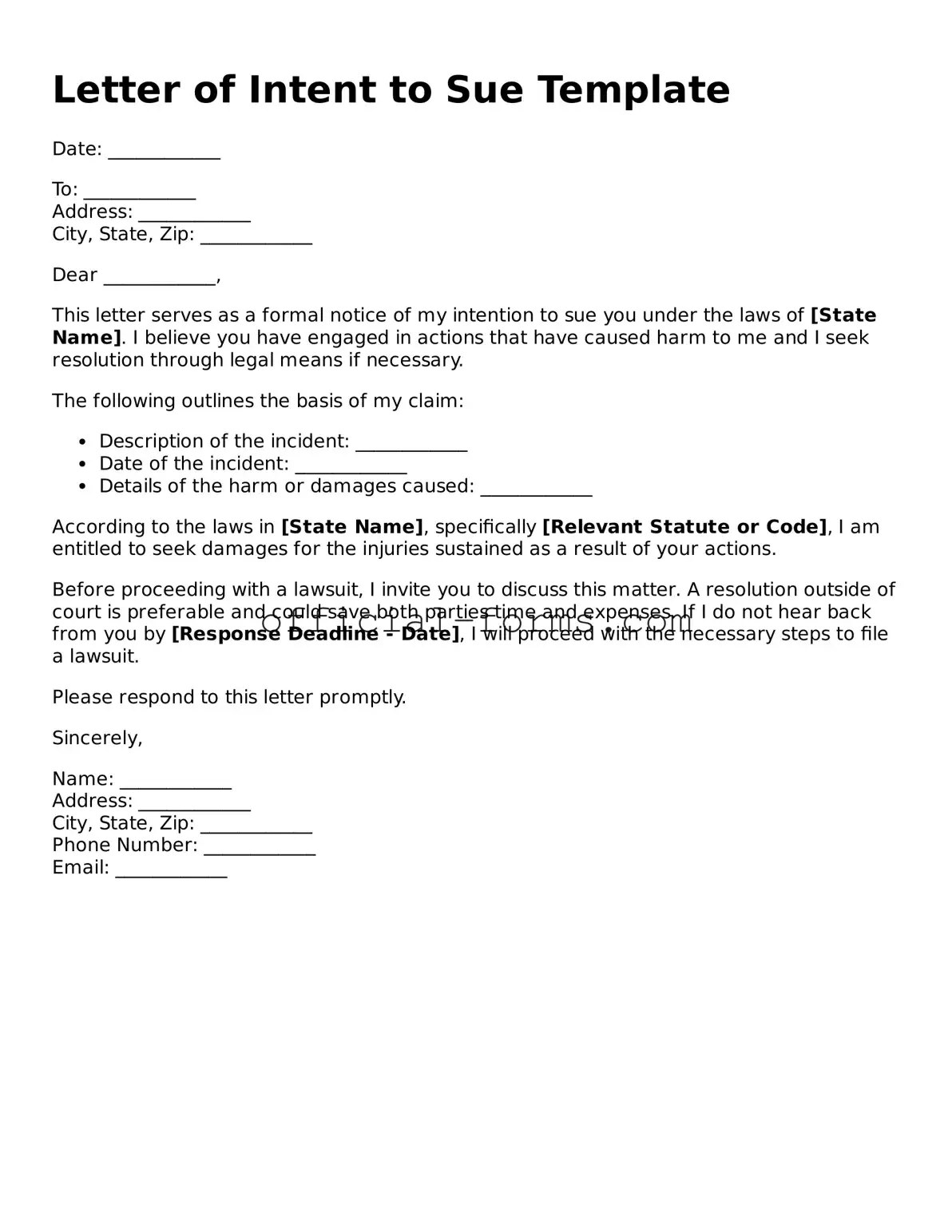Attorney-Verified Letter of Intent to Sue Template
A Letter of Intent to Sue is a formal document that notifies an individual or organization of your intention to pursue legal action against them. This letter serves as a crucial step in the legal process, often prompting a resolution before the matter escalates to court. Understanding this form can help you navigate potential disputes more effectively.
Open My Letter of Intent to Sue Now
